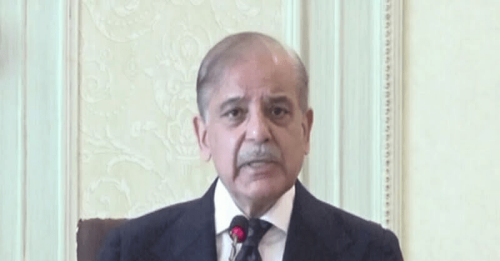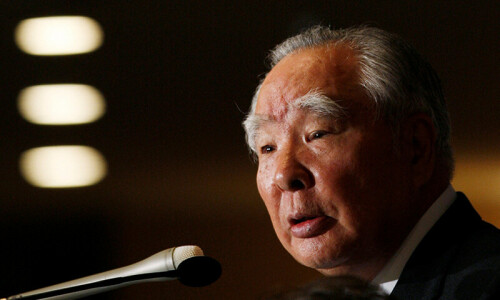War was once considered the final argument of kings. Louis XIV of France, one of the longest-reigning monarchs in recorded history, had the phrase ultima ratio regum (literally: ‘the final argument of kings’) engraved on his cannons.
That changed with the advent of nuclear weapons. As Philip Windsor put it in Strategic Thinking: An Introduction and Farewell, “The ultima ratio was now the avoidance of strategic nuclear exchange.” But as Windsor and other scholars have pointed out since nuclear weapons came into play, “within that [nuclear] context war was still a resort of policy.” That was what preoccupied strategic thinkers: how to fight — and win — a war without risking escalation and a nuclear exchange.
The thinking worked at two levels. Keeping war limited (more appropriately, controlled) even if nuclear weapons were used to take out specific targets, and fighting conventional and sub-conventional wars on the periphery while nuclear weapons kept the balance of terror at the centre.
A Pakistani political scientist proffers an original contribution to the theoretical and strategic literature on nuclear weapons as well as first-time information on three dangerous Pak-India crises
The first level of analysis, despite the empirical evidence provided by Hiroshima and Nagasaki, argued that wars could be, and likely will be, fought directly between nuclear-weapons states, which in the Cold War context meant the United States of America and the Soviet Union.
The question then was: how could such escalation be avoided? As Lawrence Freedman noted in his essay ‘The First Two Generations of Nuclear Strategists’, two schools of thought emerged –– one led by Herman Kahn, the other by Thomas Schelling.
Kahn’s concept was centred on ‘escalation dominance’, a 44-rung ladder of nuclear and non-nuclear escalation. Kahn argued that political authority could control escalation right up to ‘spasm war’, though he never claimed that “his ladder was predictive.”
Schelling, on the other hand, argued for avoidance by making the enemy fear that the process would get out of control. He drew on the “uncertainties inherent in the escalation process to achieve deterrence.” While Kahn’s strategy of escalation dominance argued for the process being controlled by the state dominating escalation, Schelling advocated “letting a situation intentionally degrade so an adversary would conclude that it would be better to turn away from the brink” instead of keeling over.
In the end, neither theory got tested and as Freedman noted, “The fundamental dilemma of nuclear strategy remained as intractable as ever.” At the same time, the two poles fought through their proxies in various parts of the world, a situation that gave rise to what we call the stability-instability paradox. When nuclear weapons are in play, states will avoid direct conflict but engage in indirect, minor conflicts that do not threaten their own survival.
Put another way, nuclear weapons discourage direct, major conflicts while incentivising indirect, minor ones. Windsor called it “war all the same.”
Moeed Yusuf brings the same problem to the regional context, of nuclear dyads caught in conflicts, with his brilliantly argued book, Brokering Peace in Nuclear Environments: US Crisis Management in South Asia. Yusuf posits that while “all modelling and empirical examinations of nuclear crisis behaviour during the Cold War assumed a bilateral context and were based on two-actor models, [the] regional nuclear context is fundamentally different [because] regional nuclear states involved in a crisis must operate in a unipolar world and contend with the preferences of the unipole and other strong states.”
To this end, Yusuf’s model of brokered bargaining studies three post-1998 nuclear test crises between Pakistan and India: Kargil (1999), Twin Peaks (Dec 2001-Oct 2002) and Mumbai (2008). In all three cases, there was a three-way interaction and the “crisis behaviour of the antagonists [was] marked by a constant tension between their incentives to pursue their maximalist objectives and their compulsion not to defy the third party completely.”
In other words, “brokered bargaining introduces a parallel dynamic focused on the third party and [is] driven by a ‘combination of sensitivities’, the third party’s to escalation risks and the regional rivals’ to third-party preferences given its power to tilt the crisis decisively against them.”
Yusuf puts out 10 propositions as “factors shaping the third party’s crisis behaviour.”
• As the unipole, the US is directly interested in preventing escalation of regional crises to the nuclear level.
• The US is likely to enter the fray early, even unsolicited, if it perceives that the crisis can potentially escalate.
• The US will shelve its larger foreign policy interests vis-a-vis the regional rivals if those interests do not complement its immediate goal of crisis de-escalation.
• Other stronger states will align with the US to ensure crisis de-escalation. They will not only include the US’s Nato allies, but also China and Russia.
• The US will rely on ‘power mediation’ to ensure de-escalation instead of more coercive strategies. Any ‘reward-punishment’ leverage would likely be dominated by positive inducements and non-military sanctions calibrated to maximise the chances of de-escalation.
• Regional rivals can manipulate the risk of war to convey resolve as well as exercise caution given the danger of nuclear war.
• While possession of nuclear weapons should give regional powers greater freedom to show resolve and pursue their crisis objectives, third-party pressure will seriously limit their strategic autonomy.
• Regional antagonists will compete in attracting third-party support. They could either do this by manipulating the risk of war or by showing restraint as a means of obtaining third-party backing.
• Brokered bargaining will tend to be a permanent fixture in regional nuclear crises in a unipolar global setting.
• While the trilateral dynamic constrains crisis behaviour in ways that favour de-escalation, the situation also throws up the multi-audience problem.
Yusuf tests these propositions in the three case studies. In doing this, he relies on information gleaned from several sources: deterrence literature, written accounts and analyses, interviews with policy- and decision-makers who handled the crises and diplomatic cables, etc. His model, based on these propositions, works in the three cases because of the logic inherent in it.

His chapter ‘Beyond South Asia: Generalising the Application of Brokered Bargaining’ is an important test for his model because, while the book primarily focuses on the Pakistan-India dyad, the theory demands that the model work in other cases too. Also, while the book primarily mentions the US, describing it as the unipole in a specific setting (Pakistan-India rivalry), we are witnessing a diffusion of power with other emerging poles.
Would the model hold? In other words, is ‘unipole’ the bedrock of brokered bargaining or is third-party intervention the lynchpin of the model?
I believe Yusuf considers — as do I — that it is the latter. The specific mention of the US in the title, while required given the context the book studies, does not constrain the application of the model.
This is important because any crisis that threatens to spiral out of control and involves the possible and potential use of nuclear weapons is a situation that would worry China and Russia, to name two strong states, as much as it would the US.
As I mentioned in my Sept 2017 article, ‘The North Korean Conundrum’, Yusuf’s brokered bargaining model must work even in a situation of crisis between North Korea and the US. In other words, if a crisis between North Korea and the US spirals, China will enter the fray and act as the third party. This should happen despite the US being a direct adversary to North Korea both in terms of Pyongyang’s threat to Washington as well as any threat to South Korea and Japan. That cooperation — brokered bargaining as Yusuf’s model posits — will focus on crisis management and de-escalation regardless of other issues between Beijing and Washington.
In fact, as recent events have shown, while South Korea is a party to the conflict between the US and North Korea, Moon Jae-in, the South Korean president, played a crucial role by extending a hand to North Korea’s Kim Jong-un. In doing that, he played no small role in the Singapore summit between Kim and US president Donald Trump. These developments have succeeded the publication of Yusuf’s book, but they follow the logic of brokered bargaining which he applies to cases other than Pakistan and India, especially Iran and North Korea.
The essential point is that when nuclear weapons are present in a regional context, a two-actor model of deterrence doesn’t work. It just cannot be that other states will sit back and let antagonists locked in conflict go up the escalation ladder. A potential nuclear exchange becomes everyone’s concern. This point forms the core of Yusuf’s brokered bargaining model.
Also, while some other scholars have talked about third parties, they have done so either in conventional settings or not focused on the role of third parties as essential — and in some ways, central — to crisis de-escalation.
Yusuf’s work is therefore original and unique in that sense. It is also the first of its kind by a Pakistani political scientist in that it proffers original theoretical contribution. The book is also immensely useful for other Pakistani political scientists who wish to delve into the theoretical and strategic understanding of nuclear weapons.
We tested the nuclear-weapons capability a score ago. We need to add value to the theoretical and strategic literature on the subject. That Yusuf is the first to do so is highly commendable. Interestingly, the work is also meant for the informed generalist. In addition to conceptual originality, Brokering Peace in Nuclear Environments also provides original, first-time information on the three crises Yusuf studies. That information, in and of itself, is crucial to understanding how decision-making plays out in the South Asian context.
The reviewer is executive editor at Indus News. He was a Ford Scholar at the Programme in Arms Control, Disarmament and International Security at the University of Illinois and a visiting fellow at the Brookings Institution, Washington DC
Brokering Peace in Nuclear
Environments: US Crisis
Management in South Asia
By Moeed Yusuf
Stanford University Press, US
ISBN: 978-1503604858
320pp.
Published in Dawn, Books & Authors, June 24th, 2018
















































Dear visitor, the comments section is undergoing an overhaul and will return soon.